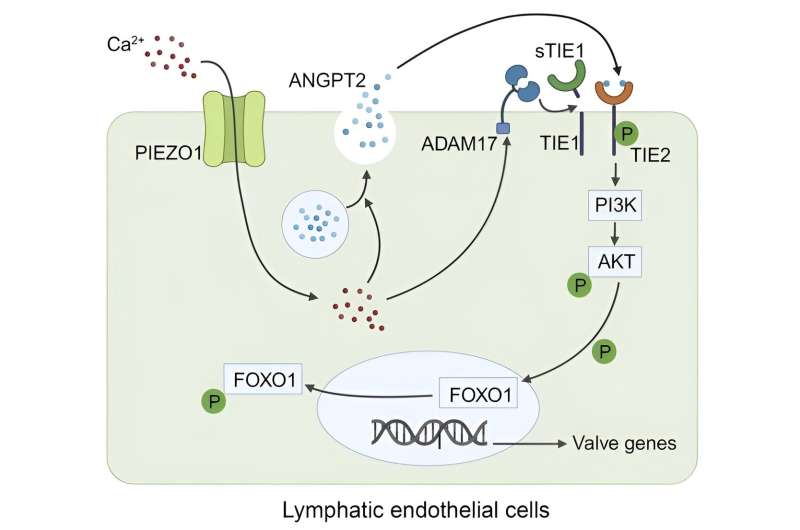This article has been reviewed according to Science X's editorial process and policies. Editors have highlighted the following attributes while ensuring the content's credibility:
fact-checked
peer-reviewed publication
trusted source
proofread
Understanding molecular drivers of lymphedema

Northwestern Medicine scientists have uncovered molecular mechanisms underlying lymphatic valve development, a discovery which could prove useful in treating lymphedema, according to a study published in the Journal of Clinical Investigation.
Lymphedema, a chronic condition that causes localized swelling, has no known cure and affects one in 100,000 individuals in the U.S., according to the National Institutes of Health.
In the study, investigators sought to understand how genetic mutations previously associated with lymphedema contribute to the disease, said Susan Quaggin, MD, the chair and Irving S. Cutter Professor of Medicine, who was senior author of the study.
"Lymphedema is a common and debilitating clinical condition," Quaggin said. "The study was designed to unravel the molecules and pathways responsible for proper development of a functional lymphatic system—disruption of lymphatic development results in lymphedema."
Previous research has pointed to mutations in the genes PIEZO1, ANGPT2 and TIE1 as potential culprits responsible for lymphedema.
In the current study, investigators studied mice missing these genes to better understand how a healthy lymphatic system develops and how genetic variations can lead to lymphedema.
By performing RNA sequencing on the mice coupled with cell-based studies, the investigators observed that the activation of PIEZO1 in lymphatic endothelial cells resulted in rapid exocytosis, or the process of vesicles fusing with the plasma membrane and releasing their contents—including the lymphatic growth factor ligand, Angiopoietin-2—to the outside of the cell.
Investigators also observed that this activation increased signaling in lymphedema-associated genes and caused the cells to export FOXO1, a protein known to repress lymphatic valve formation.
Taken together, the findings provide insight into the genetic regulation of lymphatic function and the molecular pathways involved in lymphedema, Quaggin said.
"We identified a new molecular pathway that identified how mechanical or physical cues can trigger the development of lymphatic valves at the right place and the right time—just at the place where there is likely to be a cue that physical forces require a valve to form," said Quaggin, who also directs the Feinberg Cardiovascular and Renal Research Institute.
Now, Quaggin and her laboratory will turn their attention to studying this pathway in blood vessel development, she said.
"We are now exploring whether or not this pathway is also true in blood and hybrid vessel development, specifically in development of a unique vessel in the front of the eye known as Schlemm's canal, which is a lymphatic-like vessel," said Quaggin, who is also a member of the Robert H. Lurie Comprehensive Cancer Center of Northwestern University.
"The reason why it is important to explore the Schlemm's canal is because of the important role this vessel plays in controlling the pressure in the eye and preventing the development of glaucoma."
More information: Jing Du et al, The mechanosensory channel PIEZO1 functions upstream of angiopoietin/TIE/FOXO1 signaling in lymphatic development, Journal of Clinical Investigation (2024). DOI: 10.1172/JCI176577



















